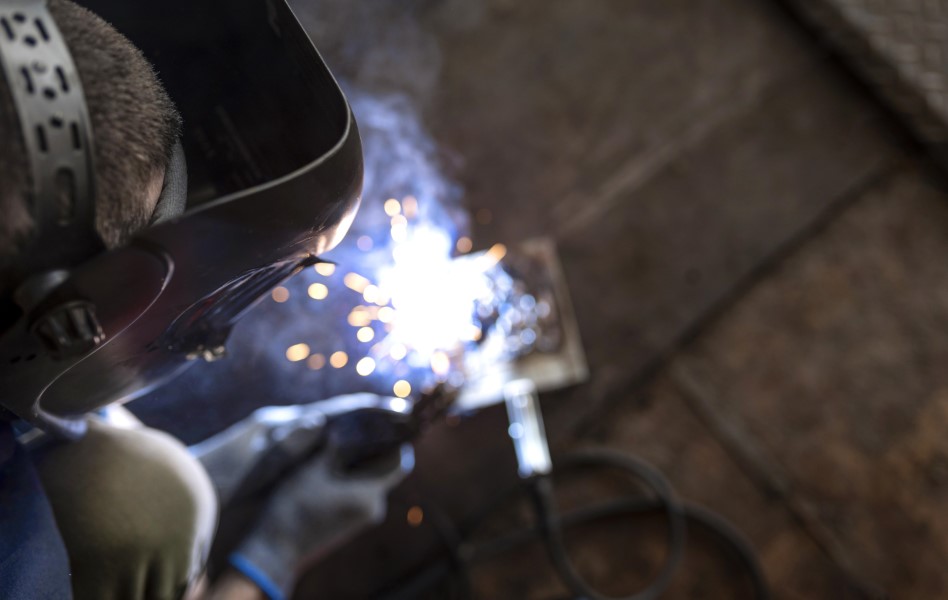Selecting the right welding machine can be a daunting task, given the myriad of options available on the market today. Whether you are a seasoned professional or a beginner, understanding the different types of welding machines and their specific applications is crucial for achieving high-quality welds. This guide aims to break down the various types of welding machines and provide insights to help you make an informed decision.
Understanding the Basics of Welding Machines
Welding machines come in various forms, each designed for specific applications, materials, and environments. The key to choosing the right machine lies in understanding the fundamentals of welding processes and their suitability for your projects. Here’s an overview of the main types of welding machines available:
1. MIG Welders (Gas Metal Arc Welding – GMAW)
Features and Benefits:
- Ease of Use: MIG welders are known for their user-friendly nature, making them ideal for beginners and professionals alike. The process involves feeding a wire electrode through a welding gun, which is then melted to form the weld.
- Versatility: MIG welding is versatile and can be used on a variety of metals, including steel, aluminum, and stainless steel. It’s particularly effective for thin to medium thickness materials.
- Speed and Efficiency: The continuous wire feed mechanism allows for fast welding speeds, enhancing productivity. The use of a shielding gas (argon, CO2, or a mixture) protects the weld from contamination.
Ideal For:
- Automotive repair and fabrication
- Home projects and DIY welding
- Light to medium industrial applications
2. TIG Welders (Tungsten Inert Gas – GTAW)
Features and Benefits:
- Precision and Control: TIG welding is known for its high precision and control, making it ideal for intricate and delicate work. It uses a non-consumable tungsten electrode and a separate filler material.
- Quality Welds: TIG welding produces high-quality welds with minimal spatter and excellent bead appearance. It’s perfect for welding thin materials and achieving clean, strong welds.
- Versatility: While TIG welding is commonly used for stainless steel and aluminum, it can also be used for a wide range of metals, including magnesium and copper alloys.
Ideal For:
- Aerospace and automotive industries
- Artistic and custom metalwork
- Welding thin materials and critical joints
3. Stick Welders (Shielded Metal Arc Welding – SMAW)
Features and Benefits:
- Robust and Versatile: Stick welding is highly versatile and can be used in various positions, making it suitable for both outdoor and indoor welding. It uses a consumable electrode coated with flux to protect the weld area.
- Ease of Setup: Stick welders are simple to set up and operate, requiring minimal equipment. They are also highly portable, making them ideal for on-site welding.
- Suitable for Dirty or Rusty Materials: The flux coating on the electrode provides a shielding gas that protects the weld from contamination, making stick welding ideal for welding rusty, dirty, or painted surfaces.
Ideal For:
- Construction and heavy fabrication
- Outdoor welding applications
- Repair and maintenance work
4. Flux-Cored Welders (Flux-Cored Arc Welding – FCAW)
Features and Benefits:
- Self-Shielding Capability: Flux-cored welders use a tubular wire filled with flux, which generates its own shielding gas during welding. This feature makes them suitable for outdoor welding where wind can blow away shielding gas.
- High Productivity: The flux-cored process allows for high deposition rates, increasing welding speed and efficiency. It’s particularly effective for welding thicker materials.
- Versatile Material Handling: These welders can handle a wide range of materials, including steel, stainless steel, and some high-alloy steels.
Ideal For:
- Industrial fabrication and construction
- Heavy equipment repair and maintenance
- Outdoor welding applications and work in windy conditions
5. Specialty Welders: Laser and Plasma
Laser Welders:
- High Precision: Laser welding uses a high-energy laser beam to melt and join materials. It’s known for its precision, minimal heat input, and ability to produce narrow, deep welds.
- Speed and Efficiency: Laser welding is extremely fast and efficient, making it ideal for high-volume production lines. It’s commonly used in the automotive and aerospace industries.
Plasma Welders:
- Cutting and Welding: Plasma welders are versatile, capable of both cutting and welding. They use a plasma arc to cut through metal and create precise, clean welds.
- Speed and Quality: Plasma welding provides high-quality welds with minimal distortion, making it suitable for thin materials and detailed work.
Factors to Consider When Choosing a Welding Machine
- Type of Material:
- Consider the materials you’ll be welding. Different welding machines are suited for different metals and thicknesses. For example, MIG welders are ideal for steel and aluminum, while TIG welders excel with stainless steel and thin metals.
- Thickness of Material:
- The thickness of the material you intend to weld will determine the welding process and machine settings. For thick materials, consider machines with higher amperage and welding capability.
- Welding Environment:
- Assess the work environment. For outdoor or windy conditions, flux-cored welders or stick welders are recommended. For indoor, clean environments, MIG or TIG welders are ideal.
- Budget and Investment:
- Welding machines vary widely in price, from entry-level models to high-end industrial machines. Determine your budget and consider the long-term investment, including the cost of consumables and maintenance.
- Skill Level:
- Your experience level plays a significant role in choosing a welding machine. Beginners may find MIG welders easier to start with, while experienced welders might prefer the control and precision of TIG welding.
Conclusion
Choosing the right welding machine involves understanding your specific needs, the materials you will be working with, and the environment in which you will be welding. Whether you opt for MIG, TIG, stick, flux-cored, or a specialty welder like laser or plasma, ensuring you have the right equipment is crucial for achieving high-quality welds.
By considering the factors outlined in this guide, you can confidently select the welding machine that best suits your projects and enhance your welding capabilities. Happy welding!

